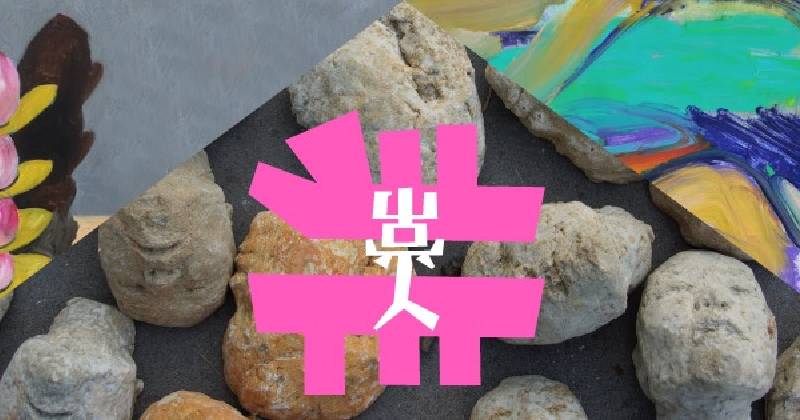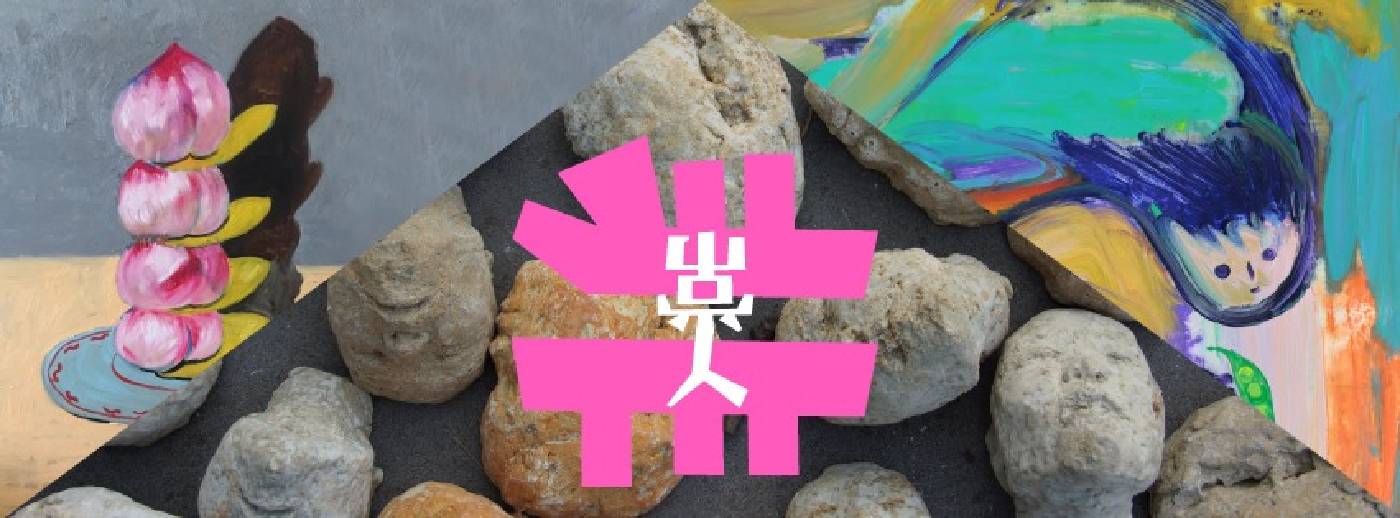絕對空間
【非常人】呂沐芢 × 蔡宗祐 × 施瑾

-
展期
日期:2020-04-22 ~ 2020-05-31
-
地點
700 台南市中西區民生路一段205巷11號
-
參展藝術家
呂沐芢、蔡宗祐、施瑾
-
【非常人-呂沐芢 × 蔡宗祐 × 施瑾】
ExtraOrdinary Human - LU, Mu-Jen × TSAI, Tsung-Yu × SHI, Jin
策展人Curator|許遠達 HSU, Yuan Ta × 童詠瑋 TUNG, Yung-Wei
展期 Date|2020.04.22 (Wed.) - 2020.05.31 (Sun.)
開幕 Opening|2020.04.25 (Sat.) 15:00
座談 Forum|2020.04.25 (Sat.) 15:30
與談人 Guest| 方偉文 FANG, Wei-Wen
策展論述|
2020年新型冠狀病毒肺炎席捲全球,世界與生活秩序為徹底打亂與重組。絕對空間在此時推出「非常人」聯展,回到藝術創作,重新思考其中的「非常」──此在中文語境中更為曖昧模糊的形容。在本次展出的三位藝術家的創作脈絡中,或可開展出創作者自身、作品形體以及觀者三個層次的「非常人」閱讀。
首先,創作者或透過藝術創作從自身向外觀看,或相反地接收外在環境的刺激進行創作。「非常」並非是藝術家有別於常人的才華或創造力,而是從其身兼人與創作者之雙重身分出發,體現於個別的觀點與標的位置。雙重身分意味著個體得承受雙重規範的作用:身而為人為求生存與溫飽,不得不向教化規訓某程度地妥協,在社會期待的人生正軌上,尋求岔出的縫隙;而當藝術創作成為其情感抒發、能量轉移或逃逸指引,如同蔡宗祐扮演其他社會角色之餘,已將繪畫內化為一種方式時,身為創作者卻又再次陷入與藝術正統的拉鋸對抗,面臨創作媒介悠久歷史傳統所產生的排除機制,以及當代藝術與知識論述、資本市場所交織交纏的系統生態。蔡宗祐便是在這樣的雙重邊緣中持續尋覓「不合時宜的戰鬥位置」,有意識地與現下之繪畫規範、藝術正典或更廣泛的現實世界保持距離,作為他攻擊挑釁經典的首要戰鬥狀態。近年他尤其轉向投入研究水墨,從中擴建自身的語彙,在自主流遁逃之餘,借鏡或創發如同其上一次於絕對空間個展時所揭示的「輪轉位移」等招數,積累更為強大的戰鬥能量。
施瑾則自幼從家庭成員之「非常」身體經驗出發,反向跳脫人體所謂的「正常」描摹視角,不斷透過創作挖掘人類的多面向形貌。在這個展覽中,三位「非常人」透過各種奇異扭曲的形體與直率不拘的筆觸,包括人面獸身、無頭身體、不成比例的身型延展與歪斜、簡化成點線的臉部表情等,形塑出一個個非寫實的「非常人」形象,共同對人的真實存有進行提問。藝術家作品中的「非常人」,易讓人聯想起超現實主義,透過新的認識視角,將日常生活元素視為超凡,重新挖掘深層的感知習性與生命節奏。
蔡宗祐便始終將平民的日常小事,視作藝術的非常大事。呂沐芢則扣連回第一個層次的藝術家主體,結合自身記憶遊走,展開他所稱的「繪畫行動」。流動與不確定性除了是作品的特質,亦是其於「走山游水」相遇之村落人群,所展現出的萬物無永恆的底層生命印記;在他們的作品中,常見大區塊的線條或色塊塗抹。蔡宗祐以此添加極端突兀的陰影,上頭還不時點綴來自其他色塊、反差強烈的顏料戳記,為表面的詼諧惡趣味深埋更多危險與不安因子。那些原略顯可愛童趣的微笑、吐舌等表情,因而更顯神秘詭譎,彷彿輕挑地戲謔著人的所見與所知。在其中幾幅畫作中,陰影的存在感甚至因其又重又厚的用色,更強過主體本身,好似宣告著深藏的潛意識呼之欲出,即將強行篡位。呂沐芢則將色塊線條包覆著畫面上置中聚焦的唯一角色,重要的是常民當下的日常狀態,而非流動不可辨的背景所指涉的走山游水地點。
呂沐芢從靈肉分離的觀點,進一步細究當代人如何以主動或被動的生存姿態,在潛入既連結又抽離的現實情境後,透過內在身體感知與理性邏輯的無窮盡交纏拉扯,嘗試接近某種本然;施瑾同樣關注力與能量場域,卻試圖往外尋求另一種動態平衡。當她為達文西的黃金比例人像延展出新向度時,「非常」於垂直與橫向之兩完美端點間所愈顯立體之處,非單關乎肉身形體,更牽涉時間縱深與其他外力作用;如是的方向指引,更可見施瑾藉由權力倒錯,將在場的一般觀眾納入「非常」的最後一個層次。她邀請觀者踏上由三百多個藝術家臉部自刻像所排成的健康步道,原為日常可見的設施,在此卻因常人以最底層、最污穢的雙腳踐踏於不可侵犯的顏面/藝術品之上,而產生了非常的神聖性翻轉。與此同時,其卻又隱隱地刺痛著觀者,日常中不同嘴臉所給予的各種社會觀點與教條,在此轉化為可感的身體痛感。
三位藝術家從自身的「非常」存在出發,透過創作自我定位或自我療癒,進而在作品中以「非常」擴充「常」,或反向為所見之「常」賦予「非常」,在創作行動中共同思辨藝術生產之於己身的「非常」意義,甚至推向藝術機制,創發與觀者之間的「非常」關係。創作或作為他們所見的碎片紀錄,卻不曾包山包海,將框內空間獨留給單一人事物。就算描繪的是無人的地景,亦極簡地省略各建物之空間結構細節。蔡宗祐曾提及自己從繪畫之外如電影等媒材汲取了許多靈感與對照。在他們的作品中,極簡不僅是風格,更是在重新認識繪畫於當代的媒材框限後,從「不能為」中追尋「能不為」的懸置,拒絕當代藝術場域之知識體系構建。因放棄對全貌與的實現與對正點的服膺,作品中的人物或場景可以是作品名的所指,卻也可以是眾生或他方。
「非常人」因生活與創作的並行與雙向循環,在「常」與「非常」間相互牽引與推進。從這樣的動態關係中,「非」常人或許也可以如同蔡宗祐所形容的,蛻變成為「牆角縫隙冒出的枝枒」一般的「非常」人。
In 2020, the pandemic of Coronavirus disease (COVID-19) has completely disrupted and rearranged the orders of life and of the world. The exhibition of "ExtraOrdinary Human" held by Absolute Space for the Arts under such circumstances, aims to return to the art creation, rethinking the "fei chang" (abnormal/unusual/extraordinary) within, a term which might seem more ambiguous in the context of Mandarin. In the creation of the three artists participating in the exhibition, we may be able to unfold three interpretation aspects of "ExtraOrdinary Human", creator him/herself, the creatures in or of the artworks and the audience.
First, creators see the external from the internal or receive stimulation from the surroundings to inspire the creation. The extraordinariness is not referred to their distinctive talents or creativity as artists, but led by their double identities as both human-beings and creators, embodied in the respective point of view and position. In addition, it implies the fact that each individual has to face the norms from both sides. As a human-being, he or she cannot help but compromise on disciplines to some degree in order to survive and make ends meet, while seeking cracks to diverge from the perfect way of life expected by the society. On the other hand, when art creation has become a way to express oneself, to transform one’s energy or to escape, as TSAI Tsung-Yu plays other social roles yet internalizes painting into a way of breathing, as a creator, he or she dooms to be trapped into a stalemate and battle against the legitimacy of arts. One is forced to encounter the exclusion of the long history and tradition of the medium, and the environment interplayed by contemporary art, the discourses, and the capital. TSAI has been continually searching for the "inappropriate fighting stance" at the edges of both territories, consciously keeping distance from the current norms of painting, art institutions and the broader reality as the first fighting move of assaulting and provoking. He has especially involved himself in water painting to amplify the vocabularies to his so-called linguistic system. While escaping from the mainstream, he has been taking examples or developing moves such as "Dempsey Roll", which he reveled from his last solo exhibition in Absolute Space for the Arts.
Inspired by the "unusual" body of the family member, SHIH Jin has departed from the normal viewpoint of drawing and has constantly explored the multi-dimensional profiles of humankind. To quest for the true human’s being, the "ExtraOrdinary Human" has then formed one unrealistic "ExtraOrdinary Human" image from another through all kinds of strage, twisted figures and straightforward, unconfined strokes, including creatures with heads of human and bodies of animals, the headless, disproportionately elongating and bending bodies, simple facial expressions in dotted lines. The "ExtraOrdinary Human" might be associated with surrealism, which regards the elements from the everyday life out of ordinary and re-develops the deep senses and rhythms in life.
TSAI focuses on the daily matters of ordinary people, and turns them into extraordinarily major issue in arts. LU Mu-jen Lama Moltis reconnects the first level of artist’s subject and combines his own memories of promenade to launch his so-called "painting action". Fluidity and uncertainty are not only the displayed characteristics in the creation but also the underclass life imprints of "nothing lasts forever" of the villagers he has encountered during the promenade in "San-Sui". We might find big areas of lines or color blocks in the artworks. TSAI uses them to create extremely odd shadows, sometimes with strokes from other blocks in strongly contrast colors beneath. It adds elements of danger and insecurity to the seeming bad taste humor. The cute and fun expressions of smiling or sticking one’s tongue out and so on therefore becomes more mysterious and unknown as if they are flippantly teasing what we think we have seen and known. In several of his paintings, the presence of the shadow even becomes stronger than the subject itself because of the thick and heavy colors, which is like a manifesto that the deep subconscious is coming alive to toughly take over. On the other hand, LU surrounds the only character that is in the focus and placed in the middle of the frame with the lines and color blocks. It is the current status of the common people that matters instead of the promenade location referred by the fluid and unidentified background.
LU further looks into how human holds the living gestures of being active or passive, dives into the connecting as well as isolating reality, and attempts to approach certain inherent human nature through the endless interweaving and conflicts of bodily feelings and rational logics. SHIH focuses on such field of power and energy, too, but looks for another dynamic equilibrium from the external. While expanding a new dimension from Leonardo DA VINCI’s ideal human body proportions, the unusual lies between the two perfect spots on the vertical line and the horizontal one become more three-dimensional. It is not merely represented by the body figure itself, but with the depth of time and other external forces being concerned as well. Moreover, such direction leads to the final aspect through the reverse of the power, including the ordinary audience into the category of "ExtraOrdinary Human". SHIH invites them to step on the "health mat" made of more than three hundred head self-portraits sculpted by the artist herself. The facility which could be seen in everyday life overturns the divinity while the ordinary people trample on the scared faces (also symbolizing prestige) and artworks with their filthiest feet, the bottom of one’s body. Meanwhile, it keeps vaguely stabbing at the audience. The social viewpoints and doctrines given by different "faces" from the daily life hereby transform into sensible pain.
The three artists begin with the "ExtraOrdinary" being, position or heal themselves through creation, and supplement the usual with the unusual, or enlighten the ordinariness with extraordinariness. Together, they show deep thoughts about the "ExtraOrdinary" meaning of art production for themselves, and even extend it into art institution to create "ExtraOrdinary" relationship with the audience. As fragmented records of what one sees, the artists have no intention to include everything, but leave the space within the frame for only one subject or one surrounding. Even when they portray landscapes with no people, they also leave out the details of each building’s space and construction. TSAI mentions that he has drawn inspiration from other media such as cinema. More than being a style, the spirit of minimalism is embraced after re-realizing the limits of the medium of painting nowadays. They have pursued the suspension of "not to do" from "what it cannot do", refusing the construction of knowledge system in the field of contemporary art. By abandoning the actuality of the whole and refusing to obey the paradigm, the characters or the scenes displayed in the artworks could not only refer to what the names of the works imply but all living creatures. Elsewhere is within here. Due to the collateral and two-way circulation of life and creation, the "ExtraOrdinary Human" hold up and advance the distinction between ordinariness and extraordinariness. Under such dynamics, the "non-ordinary" might thus be able to evolve themselves into the "ExtrOrdinary" or known as "human human" (since the term, "fei chang" could be implied as the adjective, "extraordinary" or the adverb, "extreme"), just as "the branches grew from the chink in the wall”, in TSAI’s description.
